
Publisher: StrategyRich Games
Designer: Steve E. Schroeder
Genre: RPG-lite, card driven adventure game
Year: 2010
Players: Two to six players
Ages: 14+
Playing time: 120 minutes
MSRP: $35.99
CrossRoads immerses the player into the grand excitement of being an adventurer through dangerous lands while at the same time having to work within the cut-throat dynamics that would be present in a group of treasure hunters that may not want to share the glory or the treasure.
I’m not sure what category to put this game in. There is auctioning, board movement, hand management, combat, skill level improvement, and victory points. It gave me an impression of “Roll through the Ages” combined with “High Society” and “Descent”. I’m not sure if this is the best combination, but it was interesting.
The components weren’t as bad as I had heard. There are standard round colored tokens and a standard pawn. The cards are of fairly good quality, in full color, and they come in a card box which was a nice touch. The board to me is reminiscent of Candyland. It is bright, multicolored, and has a children’s game look to it. The rulebook is also full color and has some good play examples in it. I was confused in some areas that took several plays to get ironed out, and several reads of the rulebook.
 One of the biggest criticisms that I’ve heard about the game is in reference to the player sheets. I didn’t find any fault with these at all. In fact, they are full color sheets on a score pad with enough for 15-20 plays. Very nicely done. This is where it reminds me of Roll through the Ages, because you are keeping track of experience points, and skill levels, and health. The criticism comes in because you do need to erase a lot as your health goes up and down, and your experience points change, but this didn’t bother me as I have an RPG background where this type of tracking was common. You just have to make sure you all have pencils with erasers. If they had been double sided it would have doubled the plays, but I used the other side for math calculations anyway, so maybe it is better the way it is.
One of the biggest criticisms that I’ve heard about the game is in reference to the player sheets. I didn’t find any fault with these at all. In fact, they are full color sheets on a score pad with enough for 15-20 plays. Very nicely done. This is where it reminds me of Roll through the Ages, because you are keeping track of experience points, and skill levels, and health. The criticism comes in because you do need to erase a lot as your health goes up and down, and your experience points change, but this didn’t bother me as I have an RPG background where this type of tracking was common. You just have to make sure you all have pencils with erasers. If they had been double sided it would have doubled the plays, but I used the other side for math calculations anyway, so maybe it is better the way it is.
The game itself is basically two games. There is the travel portion of the game where the players compete for experience points earned from the game board, and the quest portion of the game where the players fight monsters and earn experience and treasure.
Each player chooses a color token which will be their color in reference to the game board throughout the game. All players start with 5 cards in their hand, and the cards are multipurpose. They are used for movement, healing, combat, and bidding purposes. In the travel phase, whichever player that is going first gets the “Travel Leader” card. There is one pawn included with the game represents the entire group on the game board. This pawn will move through many points going from quest to quest until all six quests have been completed.
The travel leader plays a card to move the group. If they move the pawn over or land on a colored circle, whoever is that color gets 100 experience points. For every 100 experience points you get, you can spend it on one skill level on your skill sheet. The other players can then move the pawn if they so wish, in order to direct the group over their own color to get experience points, or to land on a treasure space. The travel leader card passes to the next person, everyone draws two cards, and the pawn is moved again.
Eventually, you will land in a quest area where the second part of the game begins. Players bid cards to become “Quest Leader”, which gives then the right to select the first character card.
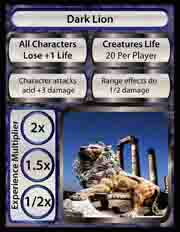
There are four different colored character cards, 2 each of red, blue, yellow, and grey. In a four player game there are only enough cards for one player each, so there will be a lot of fighting over them. Actually, in our games, we eventually settled on our favorite colors for the game and each just took our favorite. What wasn’t clear to me in the rules is who takes the second card? The second highest bidder or is it just clockwise after the quest leader? What if players tie?
The one part of the game that new players had the most difficulty grasping was the fact that their own color had nothing to do with their character color. You can have the blue player token, but buy the red character for that quest. You would then use the red play cards in your hand (or grey, which is the generic color) and the red skill levels on your skill sheet would apply. Our first game we were using all of the skills no matter what color they were, and it became a nightmare to keep track of. It finally dawned on me how it was supposed to work, but I found the rules lacking in this area.
In fact, we had a lot of “Duh!” moments in our first game. For example, the creature card we first drew said that the creature has “15 health per player”. We kept thinking that each player had to do 15 points of damage or the creature would live, when in actuality it meant that the creature has 60 points because there are four of us, regardless of who did the damage. I know, “Duh!”, but then again, it wasn’t clear to me from the rules.
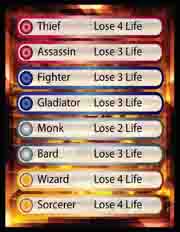
I would have preferred a different mechanism rather than using colors for players and colors for characters. Games using colors to represent multiple aspects of a game tend to confuse players. Perhaps player faction cards with distinct symbols rather than the player color tokens on the main board would have been better. Then the board would be covered with little circles with symbols rather than colors and it would look less like a children’s game. If you are color blind, forget it, you won’t be able to play this game in its current incarnation.
After character selection you pull out a monster form the creature pile, and a damage card from the damage pile. There are a lot of things going on in the quest phase, you can place experience tokens on the monster to effect the final experience points gained by each character, you attack with spells, or weapons, or just your bare hands, some weapons have different effects depending upon the type of monster. There is a lot going on.
Damage is strange. You draw a damage card and apply the effects to each player based upon what the card says. It usually ranges from 1 to 4 points damage for each character, and it can be lowered by playing certain cards or certain skills. You can also play cards in your hand to lower the amount of damage, as every card has a healing section on it.
After damage comes the attack. This is the most complicated part of the whole game. Choosing the best attack, dealing the damage, and converting it to experience points will have players pulling out the calculators on their phones. Each point of damage you do converts to 10 experience points, which is effected by the multiplier on the monster card, and then you spend these to convert them into skill levels on the character sheet. Leftover points are simply kept track of on your sheet for future use.
If the monster is still alive after the first attack by the players the quest leader can choose to attack one more round, but that is it. If you win, you get treasure, if you lose, you don’t. You still get experience points though. If you are unfortunate enough to get killed, you simply lose 200 experience points and come back again with full health.
After the quest is complete and you have spent your experience points, you move back into the travel part of the game. This continues until you complete 6 quests. At this point, all players add up their skill levels and the one with the most wins the game.
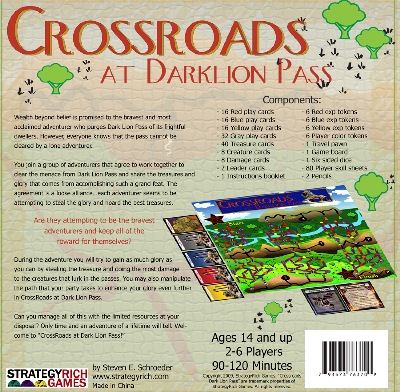
Did I like the game? Yeah, it wasn’t bad. It has a lot of replayability, and after the first few games you can finish an entire game in an hour. It may actually have TOO much going on. The travel part of the game is simple and the quest part is completely different and more complex. It seems, at times, that the mechanics are mish-mashed together. I still don’t know what a life drain effect does, it doesn’t give the player life that they drain from the monster, I know that much now. The cards and weapons and spells could have used more explanation.
Near the end of the game you have so many skills, weapons, and modifiers going on that it takes a while to actually figure out and decide how you are going to attack and how much damage you will actually do. We just started taking everyone’s work for it rather than checking their calculations, because the game would have lasted forever otherwise.
In the end, it is a good buy for the money, and has a lot of strategy built into it. This game would appeal to those interested in multiple play styles and don’t mind a little math in their games. A nice initial effort for StrategyRich Games.
- A Dungeon Delve for Kids?: A Review of Dungeon! - Oct 24, 2022
- Better, Stronger, Faster | Descent: Journeys in the Dark Second Edition Reviewed - Oct 23, 2022
- Your Planet is Doomed!: Invasion from Outer Space Reviewed - Oct 22, 2022


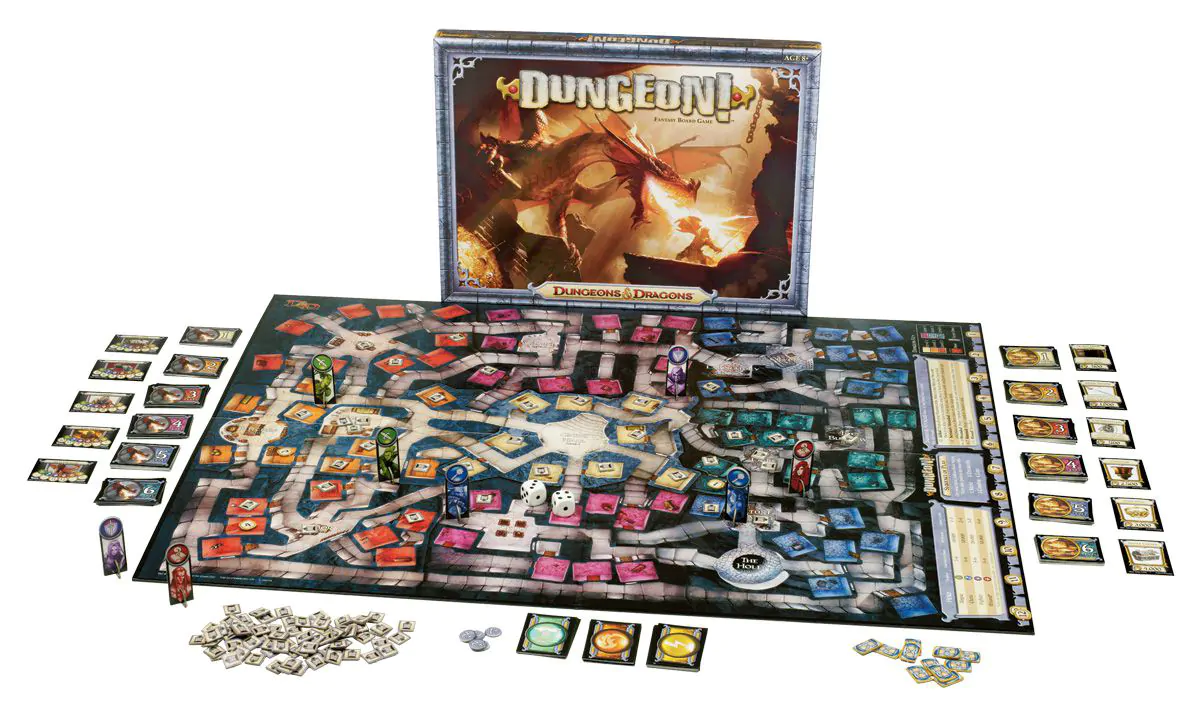
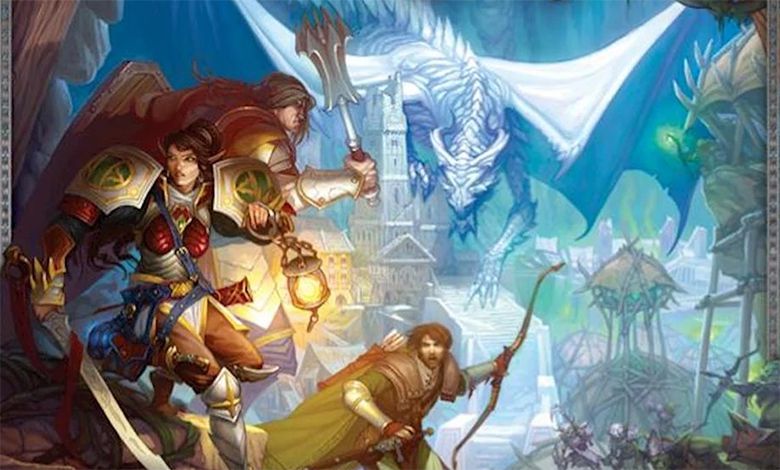
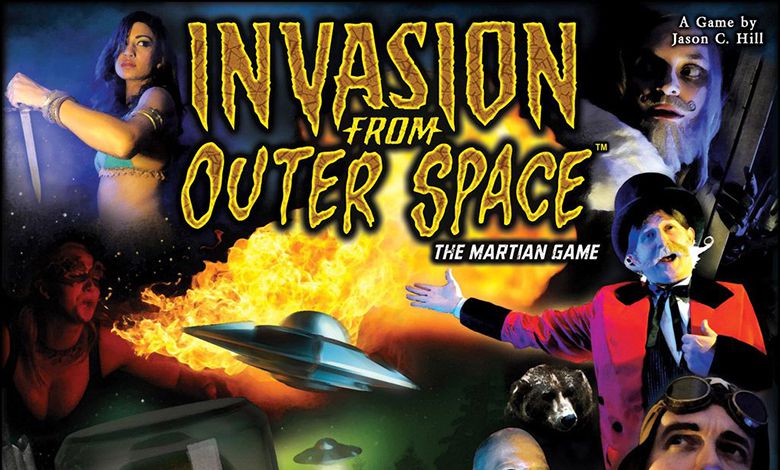
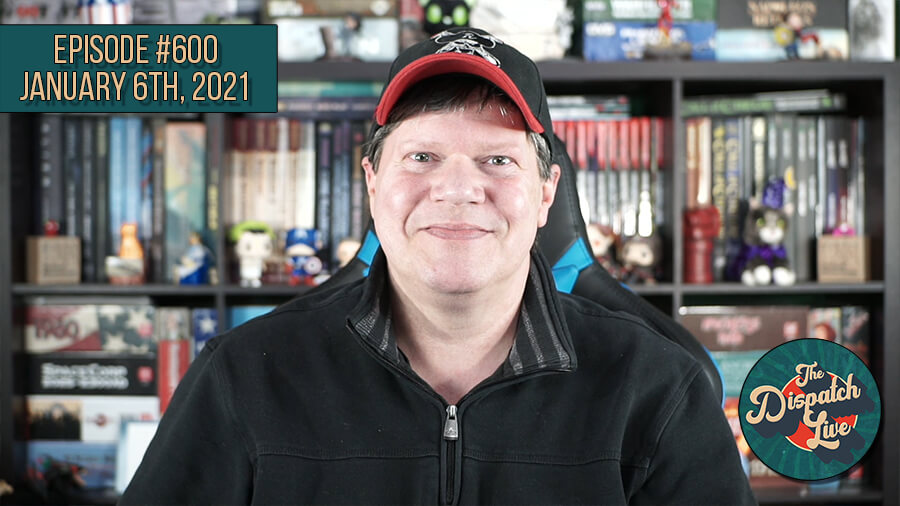

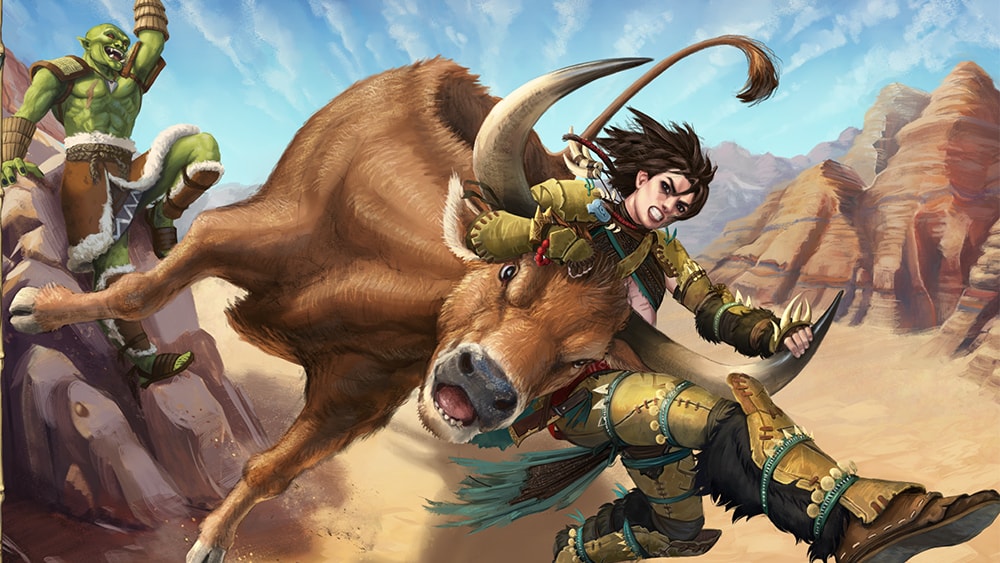

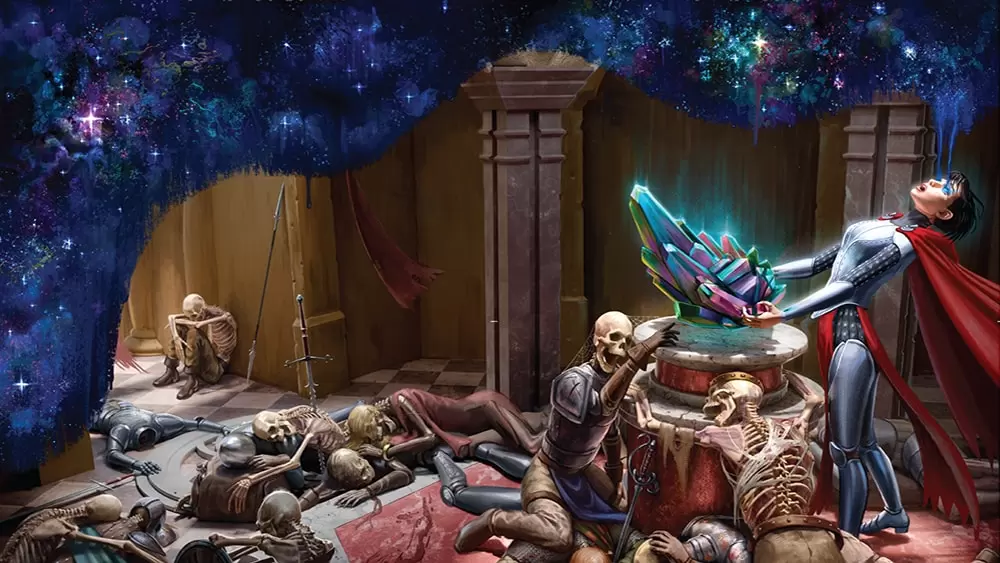






Hello,
Thank you for the review. Your review captures the nature of the game well. As a note the board travel becomes very strategic as players learn the game. Each player has the ability to effect/influence the hands of other players through game board travel. Using skills and weapons that give you card advantage than allows you to force the party into a quest before each player has a chance to re-build their hands… Very important as players learn the game.
Again, thanks for the review.